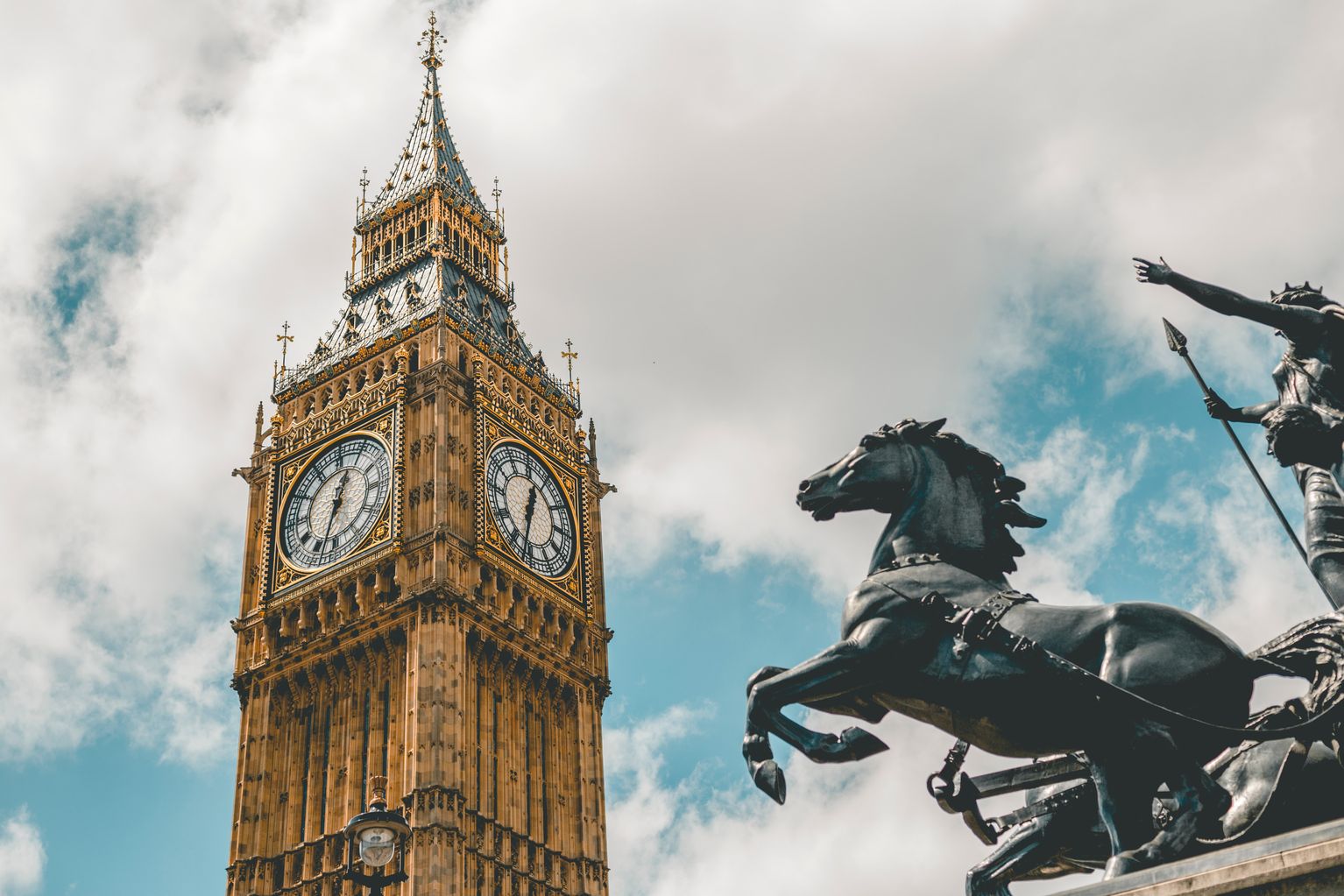
7 things you probably didn’t know about Big Ben
If seeing Big Ben is on your bucket list, get excited—the icon’s renovation is scheduled to be completed in 2022! Before you go, here are seven facts you probably didn’t know about the symbol of the British capital.
As Go Ahead traveler Chimdi put it while reminiscing about her travel memories from Europe, Big Ben is one of the icons of London that, when you see it, you can’t help but say, “Boom, that’s London.”
The guidebook pictures you’ll see of Big Ben, however, aren’t totally accurate at the moment. Since 2017, Big Ben has been undergoing a massive renovation that’s silenced its bells and shrouded it in scaffolding. But, if seeing this landmark is on your bucket list, get excited—the project is scheduled to be completed in early 2022!
That makes 2022 the year to travel to London to see the renewed glory of Big Ben and hear its chimes ring out across Westminster. Before you go, here are seven facts you probably didn’t know about the symbol of the British capital.

1. Big Ben isn’t actually the name of the landmark.
Everyone just calls the clocktower, or even the clock itself, Big Ben. But the name actually refers to the largest of the clock’s five bells. The appropriately named Great Bell is seven feet tall and weighs nearly 14 tons. As for the clocktower, it was originally called, well, the Clock Tower. But it was renamed Elizabeth Tower in 2012, to commemorate the Diamond Jubilee of Queen Elizabeth II—the 60th anniversary of her accession to the throne.
2. Big Ben is taller than the Statue of Liberty.
Elizabeth Tower stands 315 feet tall—about 10 feet taller than the Statue of Liberty! When Big Ben’s restoration is complete, visitors will have to climb 334 stone steps to reach the belfry… or take the newly installed elevator. Only residents of the United Kingdom are allowed on Big Ben tours, unfortunately, but you can stroll past the clocktower from anywhere in the world on a virtual tour of London.

3. We’re not certain how Big Ben got its name.
After a fire destroyed the Palace of Westminster in 1834, the new buildings for the Houses of Parliament were rebuilt to include a clocktower. The man in charge of the building site was Sir Benjamin Hall, who was “small but very stout, with a deep, booming voice,” according to Eric Thompson, an expert Blue Badge Guide. When the bell was being delivered from the Whitechapel Bell Foundry, Thompson says, the workers jokingly called it a big version of Ben—Big Ben.
The alternate theory for the nickname is that it was named after Benjamin Caunt, an English heavyweight boxing champion at the time.
4. The current Great Bell is cracked.
The first Great Bell, cast in 1856, cracked irreparably during testing. Its metal was melted down and recast in Whitechapel in spring 1858. On May 31, 1859, the second bell chimed for the first time, but it, too, cracked a few months later. While engineers sought a solution, one of the tower’s smaller bells was used to strike the hour, but its tone was quieter and less distinctive. The Great Bell was eventually fitted with a lighter hammer and rotated slightly, so the hammer would strike an undamaged part of the bell. The crack remains unrepaired today.

5. Big Ben’s restoration is returning its clocks to their original color scheme.
While the modern world has only known Big Ben as having black-on-white clocks, the restoration has revealed that the clock dials were originally Prussian blue. Researchers analyzed the paint and have removed multiple layers of black and dark green paint from the dials and stonework. 2022 is a great time to make that trip to see Big Ben even if you’ve already been to London. The renovation will be complete, so you’ll get to see the clock in its fully restored glory.
6. You can call Big Ben the Leaning Tower of London.
In 2011, experts learned that Big Ben is leaning slightly to the northwest, due either to the drying-out of the clay beneath the clocktower or to years of underground developments. At 0.26 degrees, the tilt is just a tiny fraction of the Leaning Tower of Pisa’s 4-degree tilt. It’s not expected to become a problem for 4,000 to 10,000 years, so you’ve got ample time to visit London and try to discern Big Ben’s tilt—20 inches at the clocktower's highest point—with your own eyes.

7. The best way to see Big Ben is from the sky.
According to Go Ahead staffer Amanda, the top of the London Eye is the best way to see Big Ben. “I suggest going twice,” she says. “Once in the daytime and once at night, because each view is different and great in its own way.” If you prefer to stay grounded, you can stop to take pictures of Big Ben from the Westminster Bridge, as most people do. But you can get an even more direct view from beneath the bridge, on the other side of the River Thames.
Big Ben may be London’s biggest attraction (literally), but the British capital has so much to explore. Want to experience all that London has to offer? Browse our London tours.
















































































